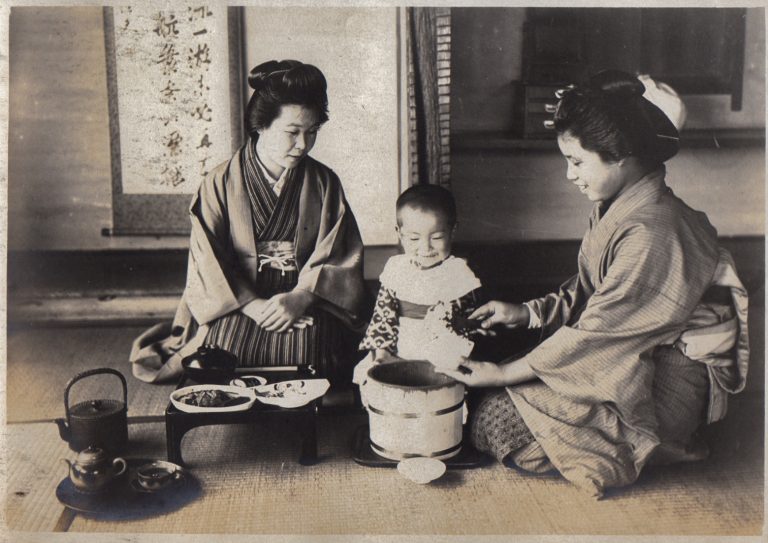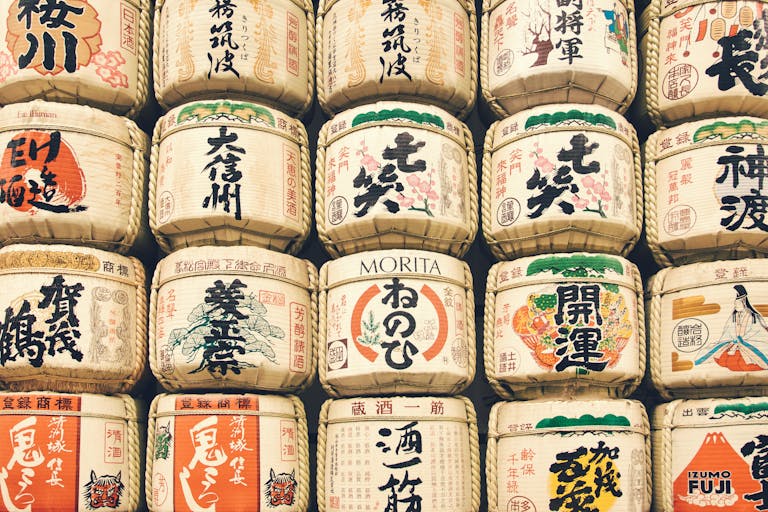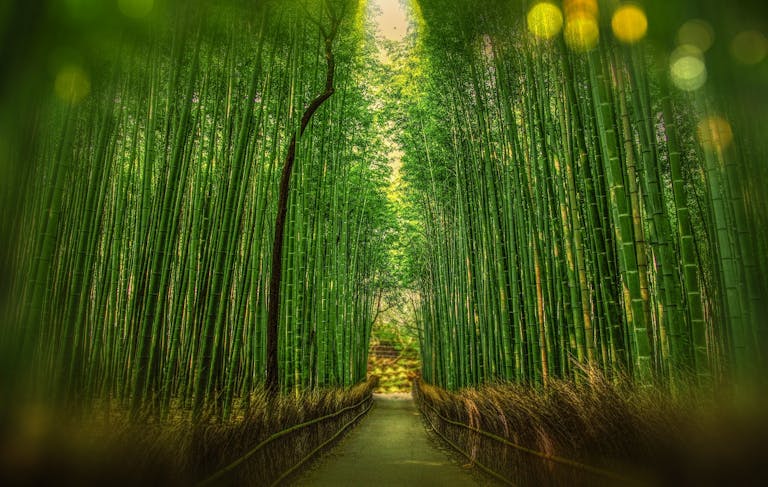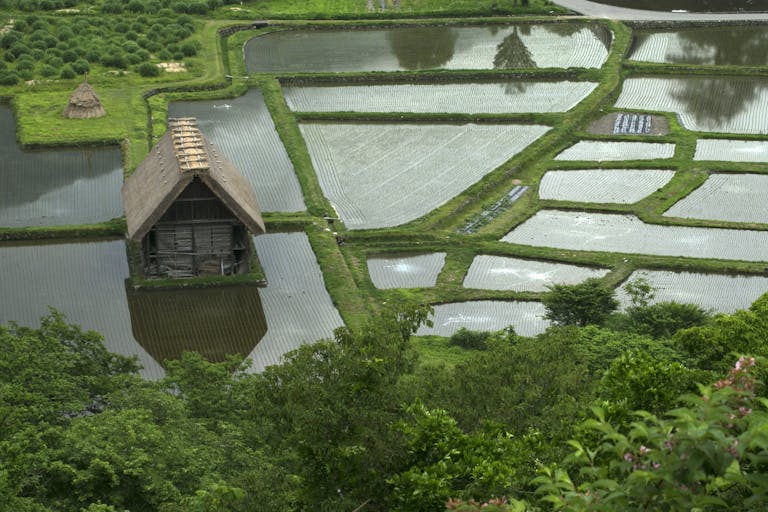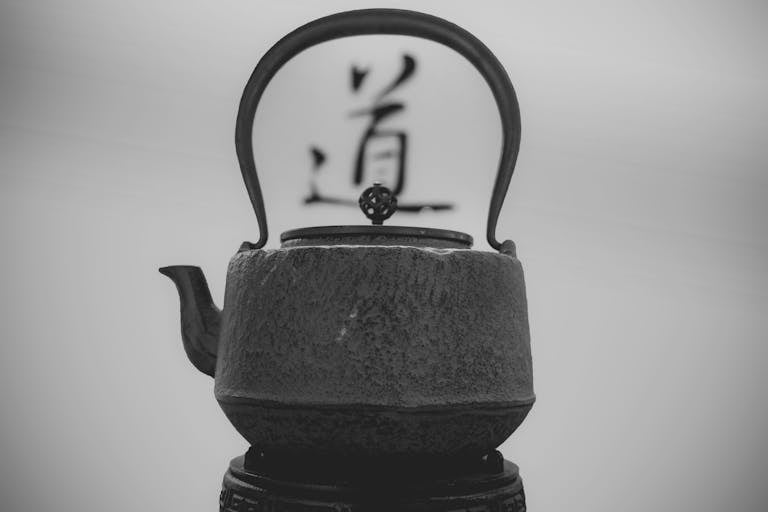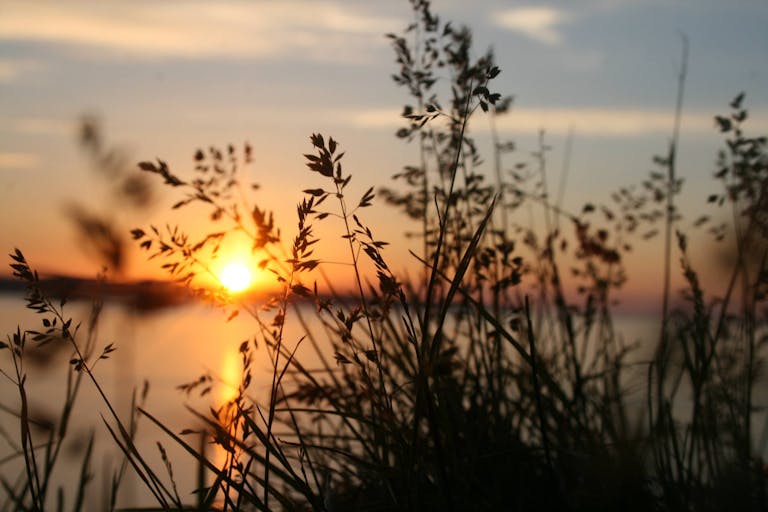Tokushima Prefecture 徳島県: Untamed and Wild Spirit of Shikoku
Introduction
Tokushima Prefecture, an eastern coast gateway to Shikoku Island from Honshū main island, boasts some of Japan’s most dramatic and diverse natural landscapes. From the mesmerizing Naruto whirlpools—one of the world’s largest natural vortexes that swirl between the islands of Shikoku and Awaji—to the remote, mist-shrouded valleys of Iya with their historic vine bridges suspended over emerald waters, Tokushima offers visitors a glimpse of Japan’s wild side. 80% of the prefecture is dominated by rugged mountains, including Mount Tsurugi, Shikoku’s second-highest peak, and is carved by crystal-clear rivers that have formed spectacular gorges like Oboke and Koboke. These waterways, including the pristine Kaifu River, wind through the landscape before meeting the Pacific Ocean along Tokushima’s eastern coastline, creating a paradise for nature enthusiasts, hikers, and adventure seekers. Throughout the seasons, Tokushima transforms—from spring cherry blossoms along the Yoshino River to the fiery autumn colors that ignite its mountain slopes—offering year-round natural splendor in this often-overlooked hidden gem of Japan. Wow, I never knew any of these amazing magical nature scenes always existed quietly alongside my whole childhood in Japan. Are you ready to dive deep to discover more wilderness gems in Tokushima? Let’s get rambling!
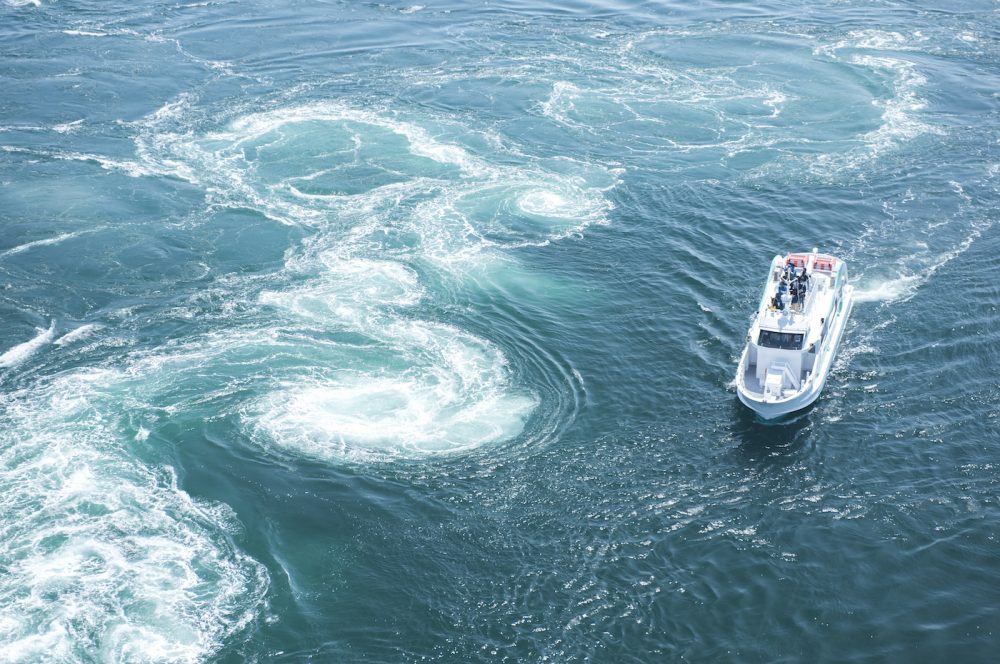
Natural Landscapes of Tokushima Prefecture
Is it just me who got so excited about everything in Nature that Tokushima has to offer?! If you haven’t noticed, I am a big nature lover (who isn’t) and my Japan area guides will be heavily focused on the natural aspects of each prefecture. I am so excited about Tokushima nature exploration because it is so different from anything I’ve experienced in my life. Let’s go!
Naruto Whirlpools (鳴門の渦潮, Naruto no Uzushio)
The narrow and complex shapes of Naruto Strait between Shikoku and Awaji islands offer one of the world’s largest whirlpools. They are created by tidal differences caused from the moon’s gravitational force that reach up to 1.5 meters (5 ft) in levels between the Inland Sea and Pacific Ocean. These whirlpools (渦潮, uzushio) can reach 20 meters (66 fet) in diameter during peak tidal conditions. House size whirlpools! During spring and autumn equinoxes are the best times to observe them as the tidal influences are the greatest then. It is so magical to be able to watch the great cosmic influences and relationships to the earth and the ocean as a visceral experience. You can observe these natural wonders from sightseeing boats if you prefer thrilling adventure or from the Naruto Bridge Observatory.
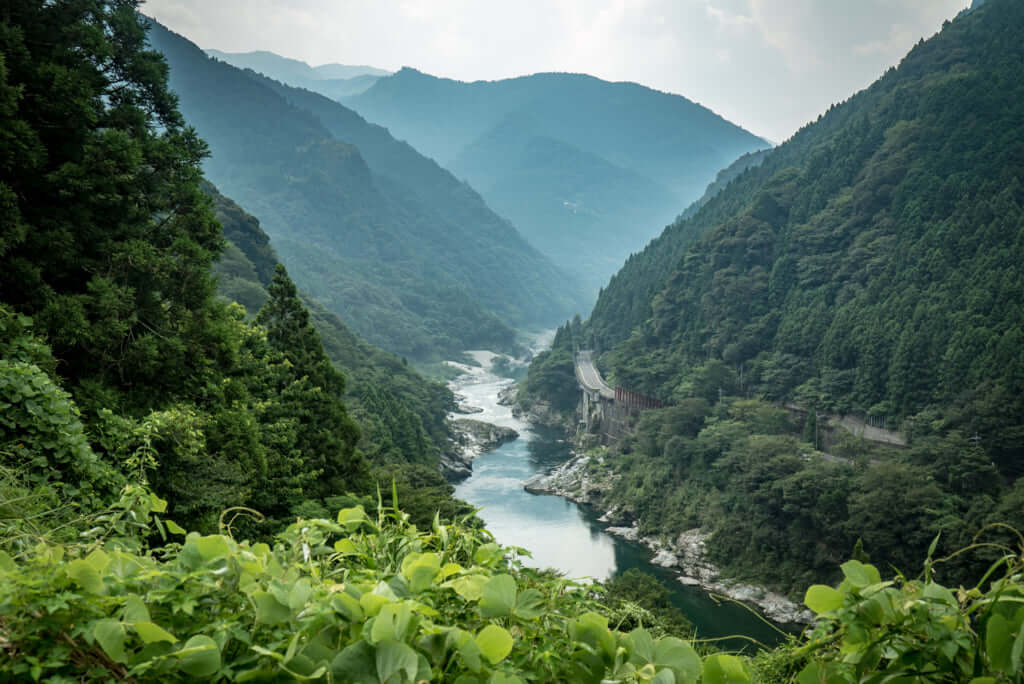
Iya Valley (祖谷, “a valley of ancestors”)
Iya is known as one of the three great hikyō (秘境, means secret, hidden wilderness) of Japan. This remote mountainous wilderness was once used as a hideout for the defeated Hei clan after they fell in the Genpei battle in 1185. The canyon features misty steep forested slopes and the pristine Iya river cutting through dramatic gorges. These great gorges are connected with multiple vine bridges called kazurabashi which are made from braided kazura vine plants. The most famous and the biggest of them is called Iya no Kazurabashi, the Kazura Bridge of Iya, and it is a 45-meter (150 ft) long, 2 meters in width (6.5 ft) and 14-meter (46 ft) high above the water. Don’t worry, the craftsmen rebuild the bridge every 3 years or so to make sure its safety, but oh boy how exciting and thrilling to be walking such a rustic swinging bridge across the great pristine river running through the valley. A few minute-walk from the bridge will take you to the waterfall Biwa no Taki (琵琶の滝, lute waterfall) named after a string instrument biwa (or pipa lute). The story says that fallen Hei clan members played biwa by the waterfall and consoled each other. On the wilderness mountains, there are also multiple old folk homes used to house the samurai family members called Bukeyashiki (武家屋敷) build over 250 years ago. You can experience traditional local cuisine in some of these Bukeyashiki as well. This is a very much off-the-beaten-path, special and unique destination for nature and history lovers.

Mount Tsurugi (剣山 Tsurugi-san “Sword Mountain”)
Mount Tsurugi is the second highest mountain on Shikoku island at 1,955 meters (6411 ft), and is considered a sacred site in Japanese mountain worship (山岳信仰, sangaku shinkō). Mount Tsurugi offers a rich alpine ecosystem with diverse plant species, and a great variety of hiking trails ranging from beginner to advanced levels. There’s a cable car access part way up so if you are not too sure about your physical shape at the moment, you can still enjoy and experience Mount Tsurugi’s magic. Mount Tsurugi is named one of a hundred great mountains in a book One Hundred Mountains of Japan written by Kyūya Fukada in 1964. Enjoy the stunning panoramic views of the Shikoku mountains from the summit.
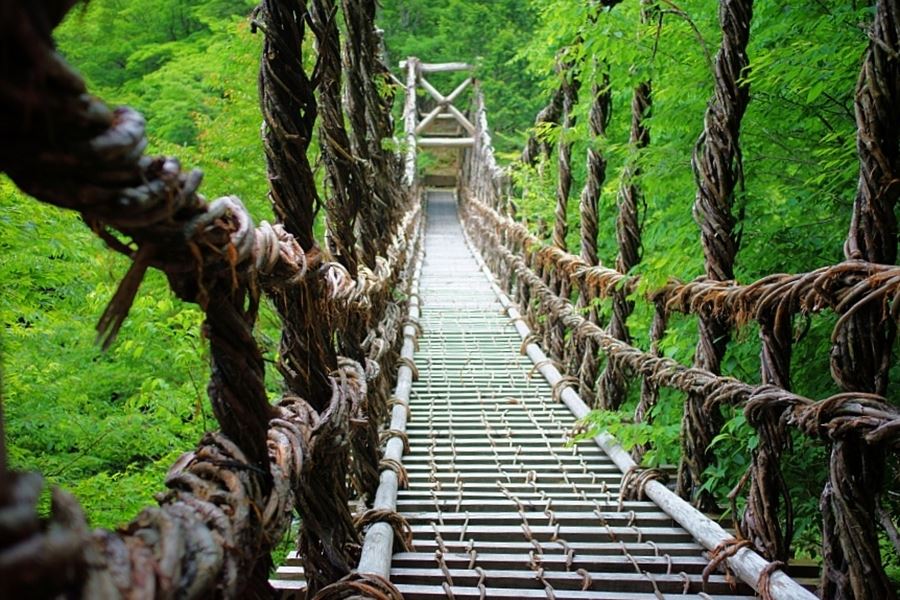
Oboke and Koboke Gorges
Some areas of the Iya valley is called Ōboke (大歩危, “danger with big steps”) and Koboke (小歩危 “small dangerous steps”) Gorges and they are registered Natural monuments of Japan. Located in the upper reaches of the Yoshino River, emerald-green waters flow through narrow passages of the gorges, and the sheer cliffs of crystalline schist that formed over the time span of 200 million years stand to guard the forests. These gorges are paradise for outdoor adventurers, offering white-water rafting, boat tours, hiking and endless exploration in the ancient remote forest. That seems like a dream vacation to me.
Kaifu River and Coastal Areas
Kaifu River starts in the south of Tokushima and flows into the Pacific Ocean. It is considered one of 32 most clear rivers in Japan designated by the environmental department, and it is known for exceptionally clear pristine waters. The biggest waterfall in Shikoku island Todoroki Falls (轟の滝, “roaring falls”) is located upstream of Kaifu Riverand at the river mouth on the Pacific Ocean is a popular surfing spot. Many surfers from all over Japan visit Kaifu Point. The coastal beaches such as Shishikui and Kaifu are known for pristine waters. There are no dams built on the river, it is preserved as wild as it can be. Kaifu River provides an important wild ecosystem for numerous species including ayu (sweetfish) which return from the ocean around June.
Distinct Seasonal Landscapes
Tokushima prefecture with its southern location in Japan offers a nearly perfect mild climate and also distinct seasonal scenes. Seasons are very important for Japanese culture as it respects the changes in Nature by the Cosmic forces and seasonal rituals and prayer timings are created according to them. Spring time around April, cherry blossoms on the Yoshino River are gorgeous. Summer is a great time to pay a visit to mountain regions for lush greenery. Iya Valley and Mount Tsurugi offer fiery and vibrant autumn colors. During winter you can appreciate the dramatic snow-capped mountain scenery even with Tokushima’s mild climate.
Notable Nature Preserves
Here is the list of notable nature preserves in Tokushima to immerse yourself. They are more easily accessible than some of the nature outdoor activities listed above.
-Higashi-Sankei Nature Park
-Oku-Iya Nature Forest
-Tsurugisan Quasi-National Park
-Parts of the Setonaikai National Park
Cultural Treasures
Now that we have taken in Tokushima’s natural beauty, let’s explore the cultural treasures of the prefecture.
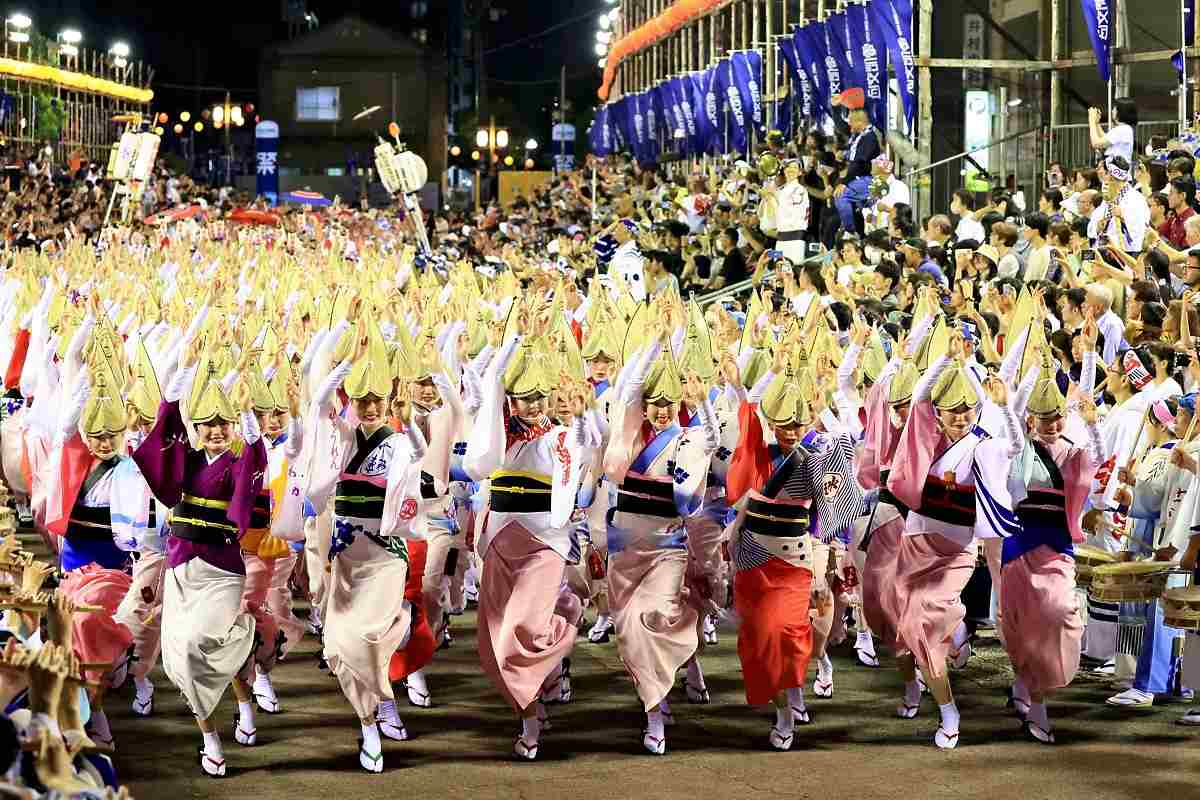
Awa Odori Festival
Awa Odori (阿波踊り, Awa dance) has a significance for me as I grew up watching my neighbor friend dance the Awa Odori in Tokyo every summer, and really enjoying it. I didn’t know that it originated from Tokushima prefecture until I learned it here. It is said that Awa Odori has 400 years of history; however its origin is not entirely clear. Some think that it was a dance performed to celebrate the raising of Tokushima Castle by the samurai leader of the area Masakatsu Hachisuka. Some others say that people started dancing annual Awa Odori in order to relieve the daily stress of strict rule by the samurai family. Either way, it is quite a blast to watch especially during the Tokushima Awa Odori Festival that happens in August Bon weekend (盆, a week to call and appreciate the ancestors) which is by far the biggest one in the country. It features lively movements, rhythms and music created by Japanese traditional instruments and just a whole lot of smiley dancing people. There are different clans called ren (連, clan or crew in Awa Odori) they perform with their unique styles and costumes. Awa Odori Center is located at Tokushima station where people can learn about Awa Odori and experience it year round.
Traditional Performing Arts
Awa Ningyo Jōruri (阿波人形浄瑠璃, Awa puppet theater) is a puppet show performed by Gidayūbushi (義太夫節, a traditional storytelling method with traditional shamisen music) and Sannindsukai (三人遣, a method of doll manipulation done by three artists) which is registered as Japan’s cultural heritage. Well worth your time to let yourself experience this Japanese traditional art. Here’s a video to further learn about the art.
受け継がれていく「阿波人形浄瑠璃」 Awa Ningyo Jōruri tradition
Spiritual Heritage
Famous Shikoku 88 Temple pilgrimage that takes you on a journey all over Shikoku island starts in Tokushima, including temples number 1 through 23 and temple number 66 in the prefecture. Tokushima is also known for its ancient mountain worship tradition thanks to the natural mountainous land. Everywhere in Japan we can observe the harmonious fusion of many different worship traditions, especially Buddhism and Shintoism deeply rooted in people and the land.

Traditional Crafts
Tokushima Prefecture has preserved a rich heritage of traditional craftsmanship that continues to flourish today, offering visitors a glimpse into Japan’s artistic soul. For centuries, local artisans have transformed the region’s abundant natural resources into exquisite works of functional art, developing techniques passed down through generations. Most renowned is Tokushima’s Awa Aizome (indigo dyeing), which once earned the region the title of “indigo kingdom” during the Edo period, producing a distinctive deep blue that captivated the nation and now the whole world. Alongside this iconic craft, the region boasts skilled traditions in Otani pottery with its earthy textures, delicate washi papermaking, and intricate Awa ningyo puppet crafting. These traditional crafts not only represent Tokushima’s cultural identity but also provide contemporary artisans with a foundation for innovation while honoring ancient techniques.
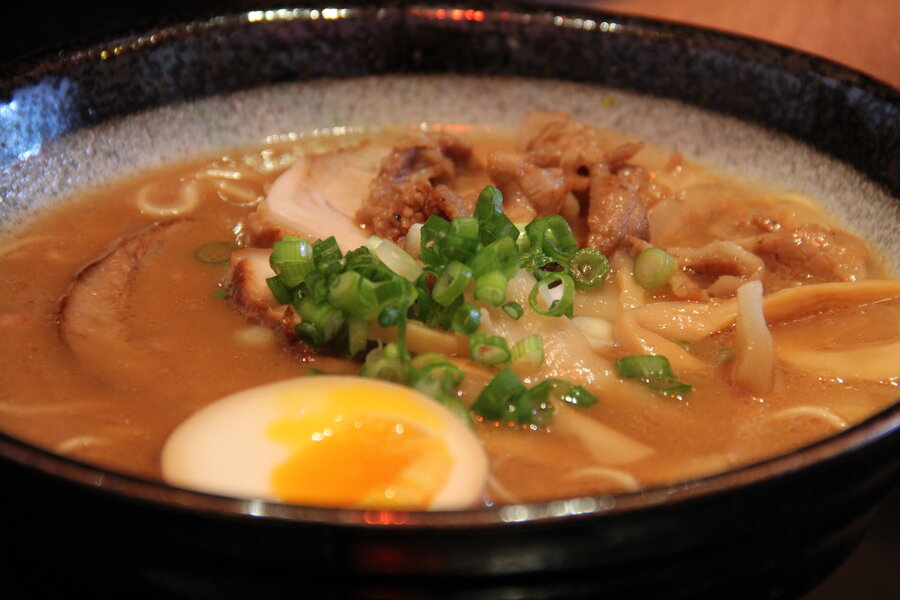
Tokushima Cuisine
Tokushima’s cuisine tells the story of its diverse landscape, where mountains meet the sea and rivers wind through fertile valleys. The prefecture’s signature dish, Tokushima ramen, features a distinctive brown soy-sauce based broth, topped with sliced pork belly, raw egg, and bamboo shoots – a hearty comfort food beloved throughout Japan. Ramen is a beloved national food of modern Japan; Tokushima ramen is different because the topping meat is slow cooked in spicy sweet sauce other than usual roasted pork. The region’s prized sudachi citrus, smaller and more aromatic than lime, brightens dishes with its tart complexity and appears in everything from sashimi accompaniments to refreshing drinks. From the mountains come delicate Iya soba noodles, traditionally served on basket trays woven from local vine, while the clear rivers provide sweet ayu (sweetfish), typically grilled with salt to enhance its watermelon-like aroma. Coastal areas contribute fresh seafood, particularly from the nutrient-rich waters where the Naruto whirlpools churn. No culinary exploration of Tokushima would be complete without sampling its unique Awaodori chicken, named after the famous festival and prepared with a special technique that creates a distinctively tender texture with crispy skin. You can always find local specialty traditional sweets everywhere in Japan, and Tokushima is not an exception. There are honestly way too many to list here, so I guess you will have to go see and taste them yourself!

3-Day Tokushima Prefecture Itinerary
Here’s a balanced 3-day itinerary that blends Tokushima’s natural wonders, cultural experiences, traditional crafts, cuisine, and key tourist spots. Tokushima is a pretty ‘chill’ as far as tourism goes as there are not very many modern city attractions, but full of natural and cultural gems which are pretty much my personal jams. Let’s go experience the wonders of Tokushima.
Day 1: Tokushima City & Naruto
Morning
Arrive in Tokushima City
Visit the Awa Odori Kaikan to learn about the famous dance festival
Watch a live Awa Odori performance (shows typically run several times daily)
Try a dance lesson if available
Lunch
Enjoy authentic Tokushima Ramen at a local restaurant
Sample dishes featuring the local sudachi citrus
Afternoon
Head to Naruto (40-minute drive from Tokushima City)
Experience the magnificent Naruto Whirlpools via sightseeing boat or from the Uzu-no-Michi walkway under the Naruto Bridge
Visit Ryozen-ji Temple, the first temple on the Shikoku 88 Temple Pilgrimage
Evening
Return to Tokushima City
Dinner at a local izakaya featuring Awaodori Chicken and seasonal seafood
Overnight in Tokushima City
Day 2: Indigo Crafts & Iya Valley (West)
Morning
Visit the Ai no Yakata (Indigo Museum) in Aizumi Town
Learn about traditional aizome indigo dyeing techniques
Participate in a hands-on indigo dyeing workshop to create your own souvenir
Lunch
Try local cuisine at a countryside restaurant en route to Iya Valley
Afternoon
Drive to the western part of Iya Valley (about 1.5 hours from Aizumi)
Cross the historic Iya-no-Kazurabashi vine bridge
Visit the Higashi-Iya Folklore Museum to learn about mountain life
Stop at the Manneken Pis statue (Peeing Boy) for the iconic view
Evening
Check into a traditional ryokan in Iya Valley
Enjoy a kaiseki dinner featuring local specialties like Iya Soba, river fish, and mountain vegetables
Relax in an onsen with valley views
Overnight in Iya Valley
Day 3: Deep Iya & Oboke/Koboke Gorges
Morning
Explore deeper into the valley to the Oku-Iya Kazurabashi (double vine bridges)
Visit a traditional thatched-roof farmhouse to understand mountain lifestyle
Lunch
Enjoy ayu (sweetfish) at a riverside restaurant near the gorges
Afternoon
Experience the dramatic Oboke and Koboke Gorges
Take a sightseeing boat tour through the emerald waters
Alternatively, try white-water rafting if you prefer adventure
Visit an Otani Pottery studio to see artisans at work and shop for souvenirs
Evening
Return toward Tokushima City
Dinner featuring local sake and seafood
Depart Tokushima or overnight in Tokushima City
Practical Tips
Transportation: Renting a car is highly recommended for this itinerary, especially for reaching the remote areas of Iya Valley.
Best Season: Spring (April-May) for cherry blossoms or autumn (October-November) for fall colors.
Alternative Activities:
-If time allows, add Mount Tsurugi via ropeway on Day 3
-Replace the pottery visit with washi papermaking
-Add a visit to Tokushima’s Bizan Ropeway for city views
This itinerary provides a good balance of Tokushima’s highlights while allowing enough time to enjoy each location without rushing.
Conclusion
What did you think of our Tokushima exploration? Would you visit? As an indigo dye lover, washi paper lover and a mountain and river lover, I didn’t realize that Tokushima had so many experiences to offer that are like perfect descriptions of my ideal vacation destination. I hope you will get to go and experience this gateway and the hidden gem of Shikoku island. Thank you for joining me on the rambling journey to discover another great prefecture of Japan, Tokushima. I will see you on the next journey! Until then, take care friends! 元気でね!

